Introduction
In this article we’ll explore the Fibonacci Bands indicator, originally developed by Bigbeluga. This tool blends volatility (via ATR), a smoothed moving average (SMMA) and key Fibonacci ratios to help traders identify dynamic support/resistance zones and potential “liquidation sweeps.”
We’ll cover how it works, how to interpret its signals, how to configure its inputs, and best practices for integrating it into your trading.
Overview of the Indicator
Fibonacci Bands consist of six dynamic lines plotted around a Smoothed Moving Average (SMMA). The distance of each band from the SMMA is set by multiples of the Average True Range (ATR) scaled by Fibonacci ratios:
- Band 1 (38.2 %): ATR × 1.618
- Band 2 (61.8 %): ATR × 2.618
- Band 3 (100 %): ATR × 4.236
These bands are coloured and projected forward, giving you:
- Volatility measurement through an ATR smoothed over 200 bars.
- Trend filtering via a SMMA of price.
- Fibonacci-based zones that act as dynamic support/resistance.
Suitable for any timeframe, it excels in impulsive trends and clear ranging markets, offering both entry/exit cues and zones for potential continuations or retracements.
How to Interpret the Bands
- Upper and lower bands
- fibtop1 / fibbot1 mark the 38.2 % level (ATR × 1.618).
- fibtop2 / fibbot2 mark the 61.8 % level (ATR × 2.618).
- fibtop3 / fibbot3 mark the 100 % level (ATR × 4.236).
- Zone colouring
- The area between the middle and outer bands (levels 2→3) is painted red above the SMMA and green below it, highlighting dynamic overbought/oversold regions.
- Liquidation sweeps
- Local pivot highs/lows are identified (leftbars = 4, rightbars = 1).
- When price touches or exceeds the outer band (fibtop3/fibbot3) and “sweeps” stops against the trend, a red or green dot marks potential stop-hunt zones before a reversal.
Entry and Exit Signals
- Bearish sweep (sweep Down)
- SMMA is declining (downtrend).
- A new pivot high breaches fibtop3.
- High crosses below the prior bar’s high.
- A red point is drawn above the bar.
- Confirmation via a horizontal segment at the pivot level.
- Bullish sweep (sweep Up)
- SMMA is rising (uptrend).
- A new pivot low reaches fibbot3.
- Low crosses above the prior bar’s low.
- A green point is drawn beneath the bar.
- Confirmation via a horizontal segment at the pivot level.
Note on false signals:
In choppy markets, there can be whipsaws. Consider filtering signals with volume, candlestick patterns or market structure to improve reliability.
Band Extension
The extend parameter projects all six bands into the future. It calculates a slope based on the SMMA change over extend/10 bars and draws forward segments at:
- 0 % (the SMMA itself)
- 38.20 % (fibtop1/fibbot1)
- 61.80 % (fibtop2/fibbot2)
- 100.00 % (fibtop3/fibbot3)
This forward projection highlights where dynamic support/resistance levels may lie over the next n periods.
Indicator Settings
| Parameter | Default | Description | Recommended Range |
|---|---|---|---|
period |
20 | SMMA period & slope base | 10 – 50 |
width |
1 | Overall multiplier for Fibonacci bands | 0.5 – 2 |
fibratio1 |
1.618 | Ratio for Band 1 (38.2 %) | 1.0 – 2.0 |
fibratio2 |
2.618 | Ratio for Band 2 (61.8 %) | 2.0 – 3.5 |
fibratio3 |
4.236 | Ratio for Band 3 (100 %) | 3.5 – 5.0 |
extend |
30 | Bars to project bands forward | 10 – 100 |
length1 |
100 | Initial ATR smoothing length | 50 – 200 |
Tip: On higher timeframes increase period and length1 for smoother bands; on lower-volatility instruments reduce width to avoid excessive band width.
ProRealTime Code
Copy and paste the following into ProRealTime’s ProBuilder editor:
|
1 2 3 4 5 6 7 8 9 10 11 12 13 14 15 16 17 18 19 20 21 22 23 24 25 26 27 28 29 30 31 32 33 34 35 36 37 38 39 40 41 42 43 44 45 46 47 48 49 50 51 52 53 54 55 56 57 58 59 60 61 62 63 64 65 66 67 68 69 70 71 72 73 74 75 76 77 78 79 80 81 82 83 84 85 86 87 88 89 90 91 92 93 94 95 96 97 98 99 100 101 102 103 104 105 106 107 108 109 110 111 112 113 114 115 116 117 118 119 120 121 122 123 124 125 126 127 128 129 130 131 132 133 134 135 136 137 138 139 140 141 142 143 144 145 146 147 148 149 150 151 152 153 154 |
//defparam drawonlastbaronly=true //---------------------------------------------// // PRC_Fibonacci bands [BigBeluga] // version = 0 // 01.07.24 // Iván González @ www.prorealcode.com // Sharing ProRealTime knowledge //---------------------------------------------// //----- Inputs period = 20 width = 1 fibratio1 = 1.618 fibratio2 = 2.618 fibratio3 = 4.236 extend = 30 //---------------------------------------------// // Calculate ATR myatr = averagetruerange[200] src1 = myatr length1 = 100 sma1 = average[length1](src1) if barindex <= 300 then atr = sma1 else atr = (atr*(length1-1) + src1) / length1 endif // Calculate SMMA src = close sma = average[period](src) if barindex <= period then smma = sma else smma = (smma*(period-1) + src) / period endif midTrend1 = smma midTrend2 = smma if close >= smma then a1 = 255 a2 = 0 else a1 = 0 a2 = 255 endif // Fibonacci levels lev1 = atr * fibratio1 * width lev2 = atr * fibratio2 * width lev3 = atr * fibratio3 * width // Fibonacci bands fibtop1 = smma + lev1 fibtop2 = smma + lev2 fibtop3 = smma + lev3 fibbot1 = smma - lev1 fibbot2 = smma - lev2 fibbot3 = smma - lev3 colorbetween(fibtop2, fibtop3, "red", 45) colorbetween(fibbot2, fibbot3, "green", 45) // Liquidation sweep leftbars = 4 rightbars = 1 // Pivot lows src1 = low if src1 > src1[rightbars] and lowest[rightbars](src1) >= src1[rightbars] and src1[rightbars] < lowest[leftbars](src1)[rightbars+1] then z = z + 1 endif // Pivot highs src2 = high if src2 < src2[rightbars] and highest[rightbars](src2) <= src2[rightbars] and src2[rightbars] > highest[leftbars](src2)[rightbars+1] then t = t + 1 endif // Signals Up/Down midtrend = smma > smma[1] signDn = midtrend and t <> t[1] and high > fibtop3 and high crosses under high[1] signUp = midtrend = 0 and z <> z[1] and low < fibbot3 and low crosses over low[1] if signDn then drawpoint(barindex, high + myatr, 2) coloured("red") hx1 = barindex[1] hy1 = high[1] checksweepDn = 1 elsif signUp then drawpoint(barindex, low - myatr, 2) coloured("green") lx1 = barindex[1] ly1 = low[1] checksweepUp = 1 endif // Confirmation segments if checksweepDn then if (close < open and high > hy1 and open < hy1) or (close >= open and high > hy1 and close < hy1) then hx2 = barindex drawsegment(hx1, hy1, hx2, hy1) checksweepDn = 0 endif endif if checksweepUp then if (close < open and low < ly1 and close > ly1) or (close >= open and low < ly1 and open > ly1) then lx2 = barindex drawsegment(lx1, ly1, lx2, ly1) checksweepUp = 0 endif endif // Extension slopi = round(extend / 10) slope = (smma - smma[slopi]) / slopi if islastbarupdate then n1 = barindex n2 = n1 + extend // SMMA projection (0%) ym1 = smma ym2 = ym1 + slope * extend drawsegment(n1, ym1, n2, ym2) drawtext("0.0% (#ym2#)", n2+7, ym2) // 38.2% y11 = fibtop1; y22 = y11 + slope * extend drawsegment(n1, y11, n2, y22) coloured("red", 80) drawtext("38.20% (#y22#)", n2+7, y22) // 61.8% y111 = fibtop2; y222 = y111 + slope * extend drawsegment(n1, y111, n2, y222) coloured("red", 155) drawtext("61.80% (#y222#)", n2+7, y222) // 100% y1111 = fibtop3; y2222 = y1111 + slope * extend drawsegment(n1, y1111, n2, y2222) coloured("red", 155) drawtext("100.00% (#y2222#)", n2+7, y2222) // Lower bands projections yb11 = fibbot1; yb22 = yb11 + slope * extend drawsegment(n1, yb11, n2, yb22) coloured("green", 80) drawtext("38.20% (#yb22#)", n2+7, yb22) yb111 = fibbot2; yb222 = yb111 + slope * extend drawsegment(n1, yb111, n2, yb222) coloured("green", 155) drawtext("61.80% (#yb222#)", n2+7, yb222) yb1111 = fibbot3; yb2222 = yb1111 + slope * extend drawsegment(n1, yb1111, n2, yb2222) coloured("green", 155) drawtext("100.00% (#yb2222#)", n2+7, yb2222) endif return midTrend1 style(line) coloured("black", a1), midTrend2 style(dottedline) coloured("black", a2), fibtop1 coloured("red", 80),fibtop2 coloured("red", 155),fibtop3 coloured("red", 155),fibbot1 coloured("green", 80),fibbot2 coloured("green", 155),fibbot3 coloured("green", 155) |
Conclusions & Best Practices
- Strengths: Dynamically combines volatility and Fibonacci ratios to map out clear support/resistance zones in both trends and ranges.
- Complementary filters: Improve signal quality by layering volume analysis, momentum divergences (e.g. RSI/MACD) or static S/R levels.
Share this
No information on this site is investment advice or a solicitation to buy or sell any financial instrument. Past performance is not indicative of future results. Trading may expose you to risk of loss greater than your deposits and is only suitable for experienced investors who have sufficient financial means to bear such risk.
ProRealTime ITF files and other attachments :PRC is also on YouTube, subscribe to our channel for exclusive content and tutorials
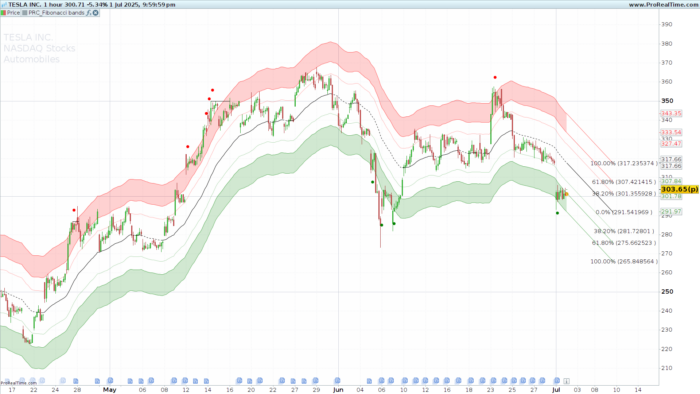


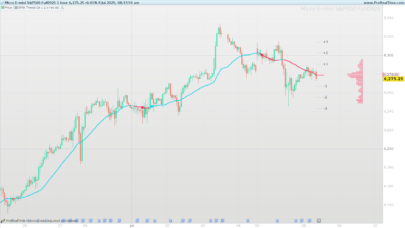
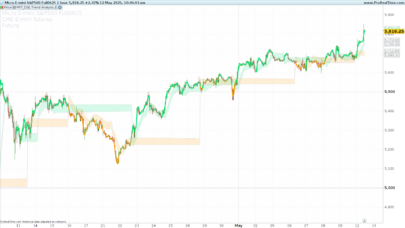


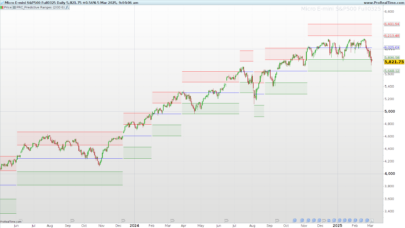
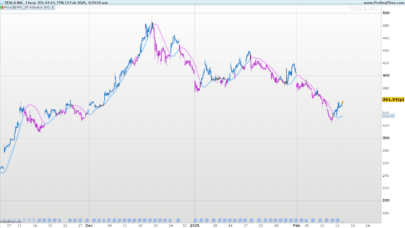

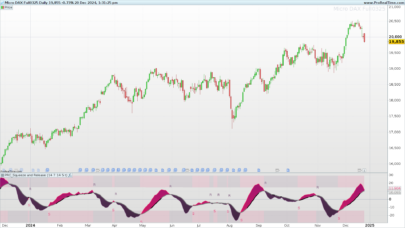

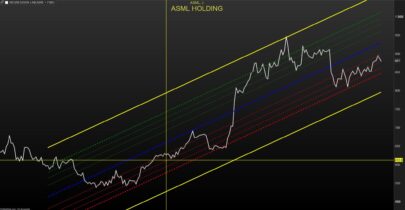
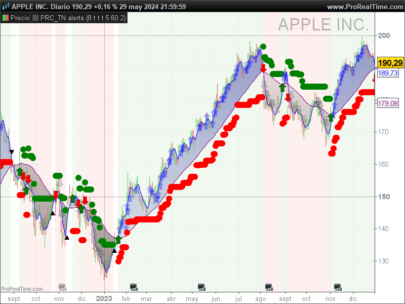
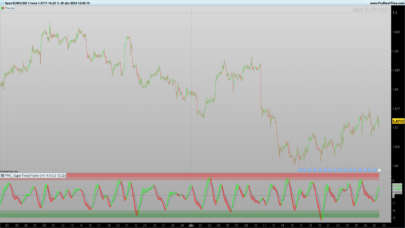
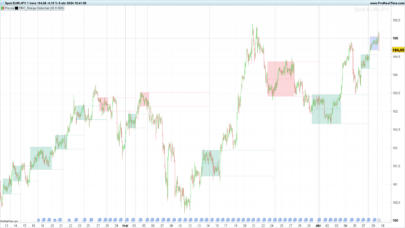
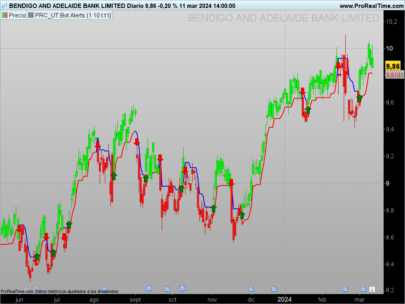

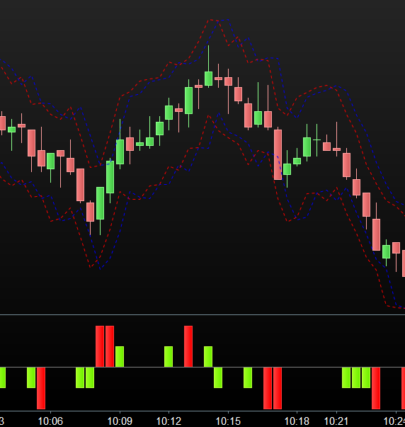
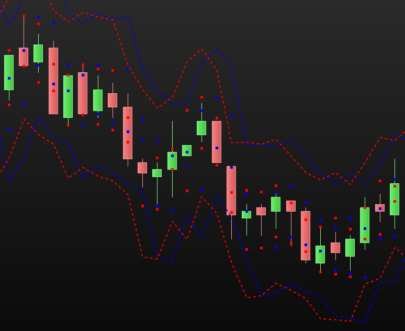
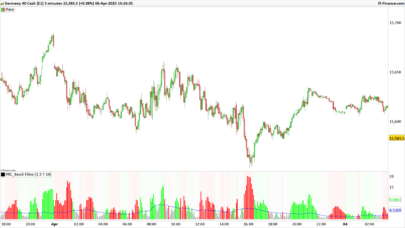
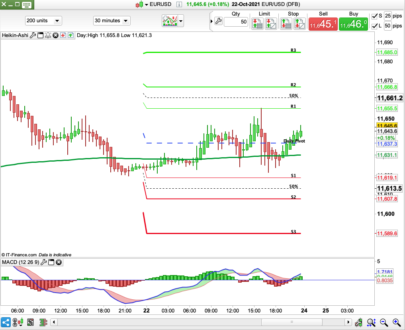
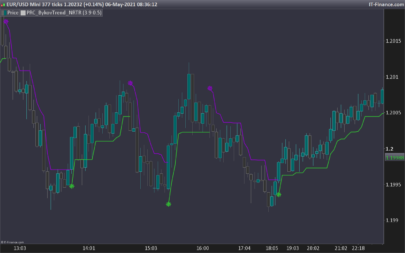



Ivan, it looks as if something is really wrong with this indicator. When I import and apply it (as is), it produces results very different from what you show. There is a very significant (and unrealistic) narrowing of the bandwidth from barindex-200 onwards.
Hello! For proper visualization, it is recommended to have more than 1k bars loaded.
Thanks Ivan. Though it does not remove the ‘tapering at the beginning’ phenomenon, it does make it more palatable.